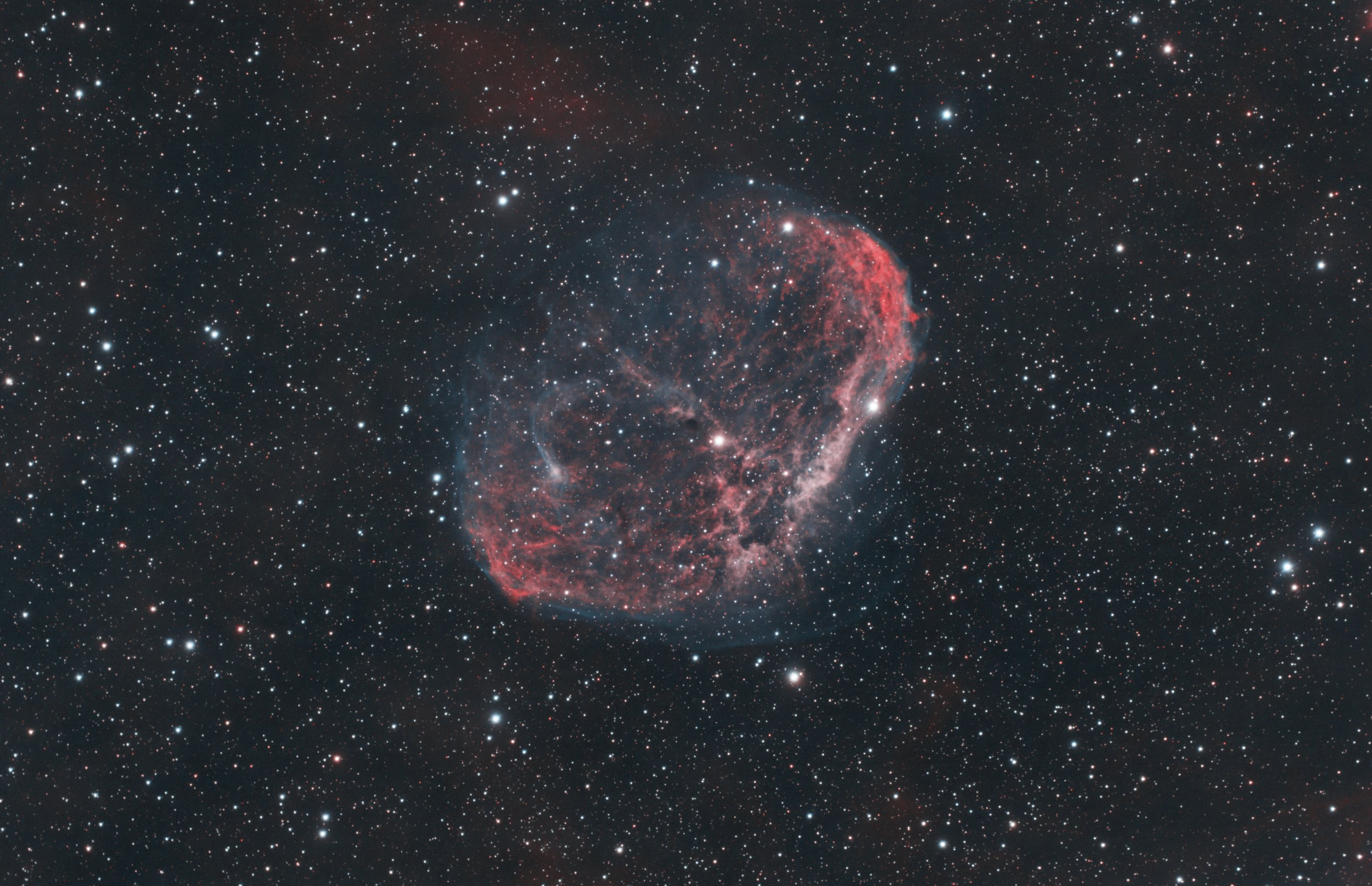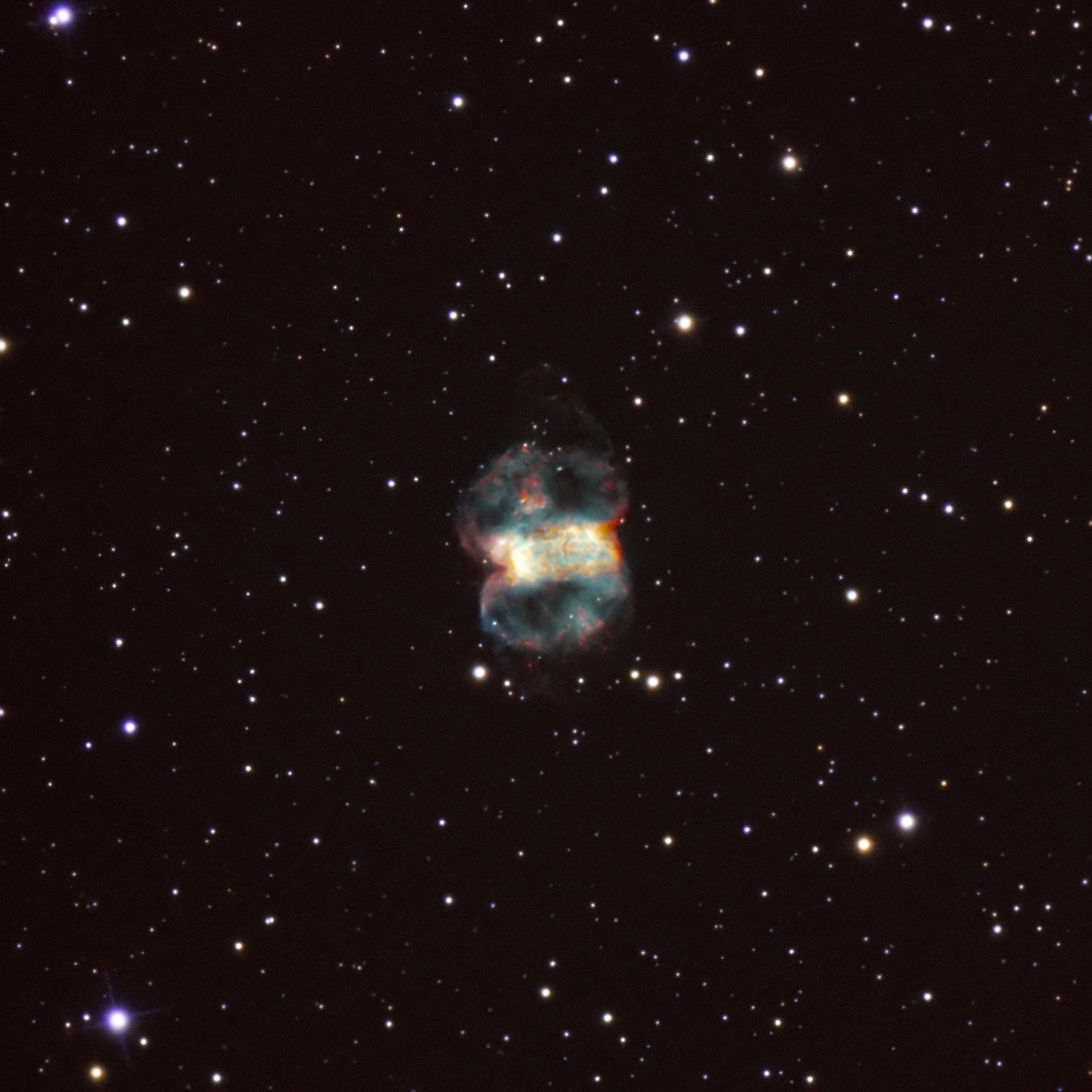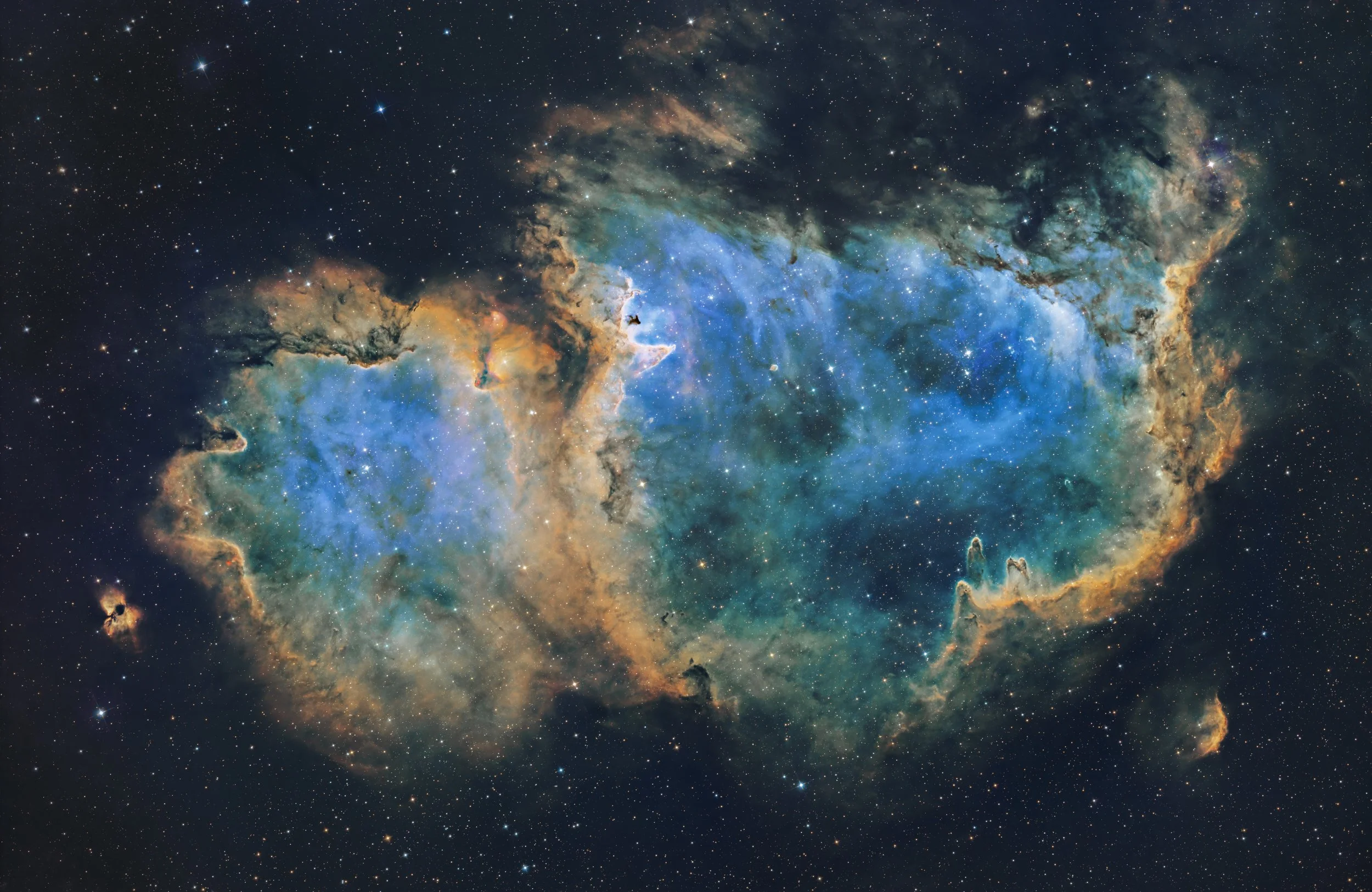M16, The Eagle Nebula

The Eagle Nebula (catalogued as Messier 16 or M16, and as NGC 6611, and also known as the Star Queen Nebula and The Spire) is a young open cluster of stars in the constellation Serpens, discovered by Jean-Philippe de Cheseaux in 1745-46. Its name derives from its shape that is thought to resemble an eagle. It contains several active star-forming gas and dust regions, including the famous "Pillars of Creation", photographed by the Hubble Space Telescope.
Evidence from the Spitzer Telescope suggests that the pillars in M16 may already have been destroyed by a supernova explosion. Hot gas observed by Spitzer in 2007 suggests that the area was disturbed by a supernova that exploded some 8000 to 9000 years ago. Due to the distance of the nebula, the light from the supernova would have reached Earth between 1000 and 2000 years ago. The more slowly moving shock wave from the supernova would have taken a few thousand years to move through the nebula, and would blow away the delicate pillars – but the light showing us the destruction will not reach the Earth for another millennium.
Imaging Details
Telescope: Takahashi FSQ-106 ED
Camera: sBig STF-8300M
Filter: HA 12 x 600
I’ve been a dedicated to Squarespace fan for 20 years. Love the product, people and company.




